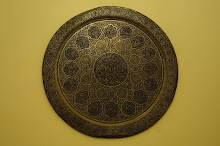Canadian journalist, and friend, Adnan Khan, has been covering South Asia and Middle East for over a decade. When not traipsing around Turkey, his home turf, the Maclean's correspondent can usually be found in Pakistan or Afghanistan working on his next feature story.
In 2012, Khan took a much needed break from his reporting duties and embarked on an epic 8,000 km overland journey between Kabul and Istanbul. A trip like that is impressive enough given the distance and dicey nature of some of the areas he travelled through. But it was the underlying purpose of the journey, and the method of travel, that made the voyage even more exceptional.
Khan and his two travel companions blazed through Afghanistan, Pakistan, Iran and Turkey in an auto rickshaw - that small, quirky three wheeled vehicle sometimes used for short jaunts in urban areas of the developing world. The trio bolstered that feat, by making several pit stops along the way to put on circus-style performances, and workshops, for underprivileged children.
The group dubbed their travelling road show "The Rickshaw Circus".
You can read all about his amazing journey here.





























.jpg)























